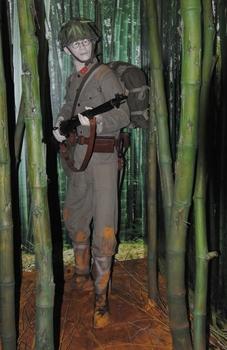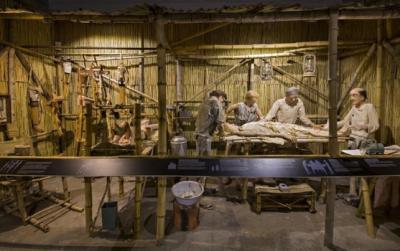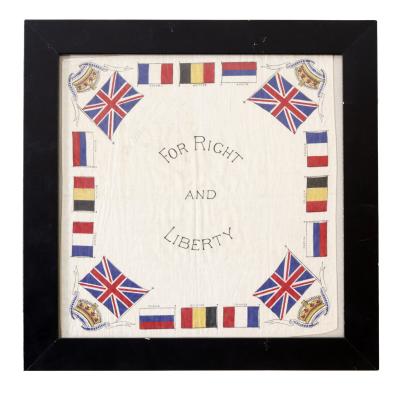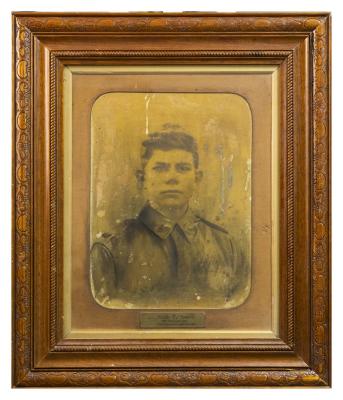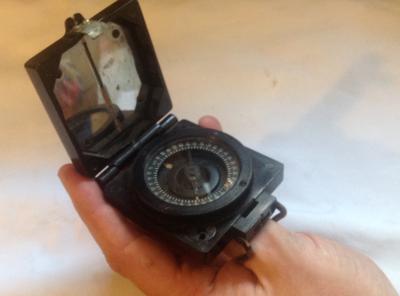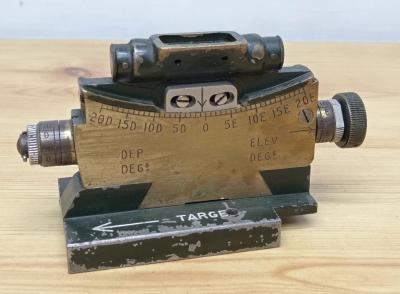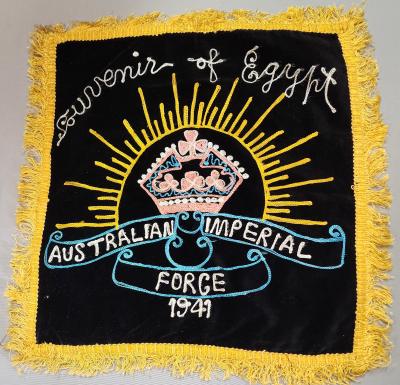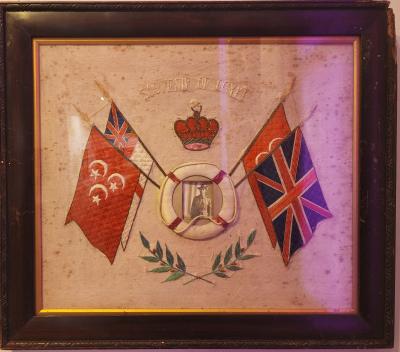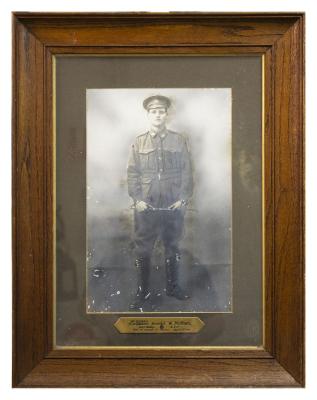Medal Group - Lieutenant Arthur Wilfred (Pompey) Gull MC
Medal group of 6 medals consisting of Military Cross, 1914-15 Star, British War Medal, Victory Medal, 1939-45 War Medal, and Australian Service Medal 1939 - 1945, displayed in as found condition together with Australian Imperial Force and Imperial camel Corps badges.
Born in Guildford, Gull was nicknamed "Pompey" by local Aboriginals as a mark of respect. He attended Guildford Grammar School and then became a master pearler, working in Broome, before he enlisted in January 1915, sailing for the war from Fremantle, aged 24. He reached Gallipoli in July but after a few weeks fell victim to the appalling living conditions and was sent to hospital at Lemnos suffering from dysentery He rejoined the battle in November and after the Anzac evacuation from Gallipoli he joined the Imperial Camel Corps, which took part in operations against the Turks in the Sinai desert and the advance into Palestine.
In 1917, Pompey was promoted to lieutenant and won acclaim for his leadership, including missions on which the unit met Lawrence of Arabia, a commander of Arab units fighting the Turks. When the camel division was disbanded as the Anzacs pushed into Palestine, Pompey was posted as an officer of the 14th Light Horse Regiment.
In October 1918, Pompey was part of "The Great Ride" as the light horsemen led the way into Damascus. The attack led to the Turkish surrender and Pompey was awarded the Military Cross for leading an attack against a machinegun post in the gardens, clearing the way for other troops.
After the war, Pompey returned to pearling in Broome and was credited in official reports with taking charge of returned servicemen to quell race riots in the town in 1920. He moved on to farming at Three Springs and then Doodlakine but continuing problems caused by his war injury and illness, along with drought and the Great Depression, caused him to walk off the farm in the 1930s. During World War II, Pompey served overseeing war preparedness and the gun emplacements at Rottnest. Arthur Wilfred "Pompey" Gull died in 1964.
Details
Details
Camels were well suited for the desert in Sinai and Palestine. They could carry around 145 kilograms and go without water for up to five days. Tens of thousands were used to get water to the soldiers, Later they were used to transport cameliers into battle, where the riders would dismount to fight.
The Imperial Camel Corps Brigade was formed in 1916 from British and Commonwealth troops and was attached to the Anzac Mounted Division. There were four regiments: the 1st and 3rd were Australian, the 2nd was British, and the 4th was a mix of New Zealanders and Australians. Each regiment had around 770 men, and at full strength the brigade contained almost 4,000 camels. In 1917 the brigade took part in the fighting at Gaza and Beersheba in Palestine. By the following year the country’s harsh terrain had made the camels less effective than horses. No longer needed, the Australian cameliers were transferred back to the light horse.
The medals are exhibited as handled by Lieutenant Gull. They remain unmounted. The Military Cross was never removed from its presentation case. The 1914-15 Star, British War Medal and Victory Medal were place in a tobacco box. The ribbons of the War Medal and Victory medal are transposed. The World War 2 medals were never applied for by Pompey. They were acquired by the family after his death.
Australian Army Museum of Western Australia
Australian Army Museum of Western Australia
Other items from Australian Army Museum of Western Australia
- Diorama - Malaya, "He's Coming South", 1942
- Diorama - Worls War 2, Burma-Thai Railroad, 1943
- World War 1, Western Australia, Souvenir Patriotic Hankerchief, 1765 COLLINS, 10 Light Horse
- World War 1, Western Australia, Souvenir Patriotic Hankerchief, 7718 COLLINS, 16 Battalion
- World War 1, Western Australia, 2220 HOWARD, 11 Battalion
- World War 1, Sweetheart Souvenir Parcel from Ypres, LONGMORE / SUTTON, 1918
- Magnetic Marching Compas, Mk 1
- Large Technology Item, Vickers Machine Gun, Clinometer Gun Sight
- World War 2, Eastern Mediterranean, Egypt, SX5263 ARTHUR, Embroidered Souvenir, 1941
- World War 1, Egypt, Memorial Souvenir, 324 PARKINSON, 10 Light Horse, 1915
- World War 1, Egypt, Framed Memorial Souvenir, 2874 PARKINSON, 11 Battalion, 1915
- World War 1, Western Australia, 26948 METTAM, Australian Field Artillery
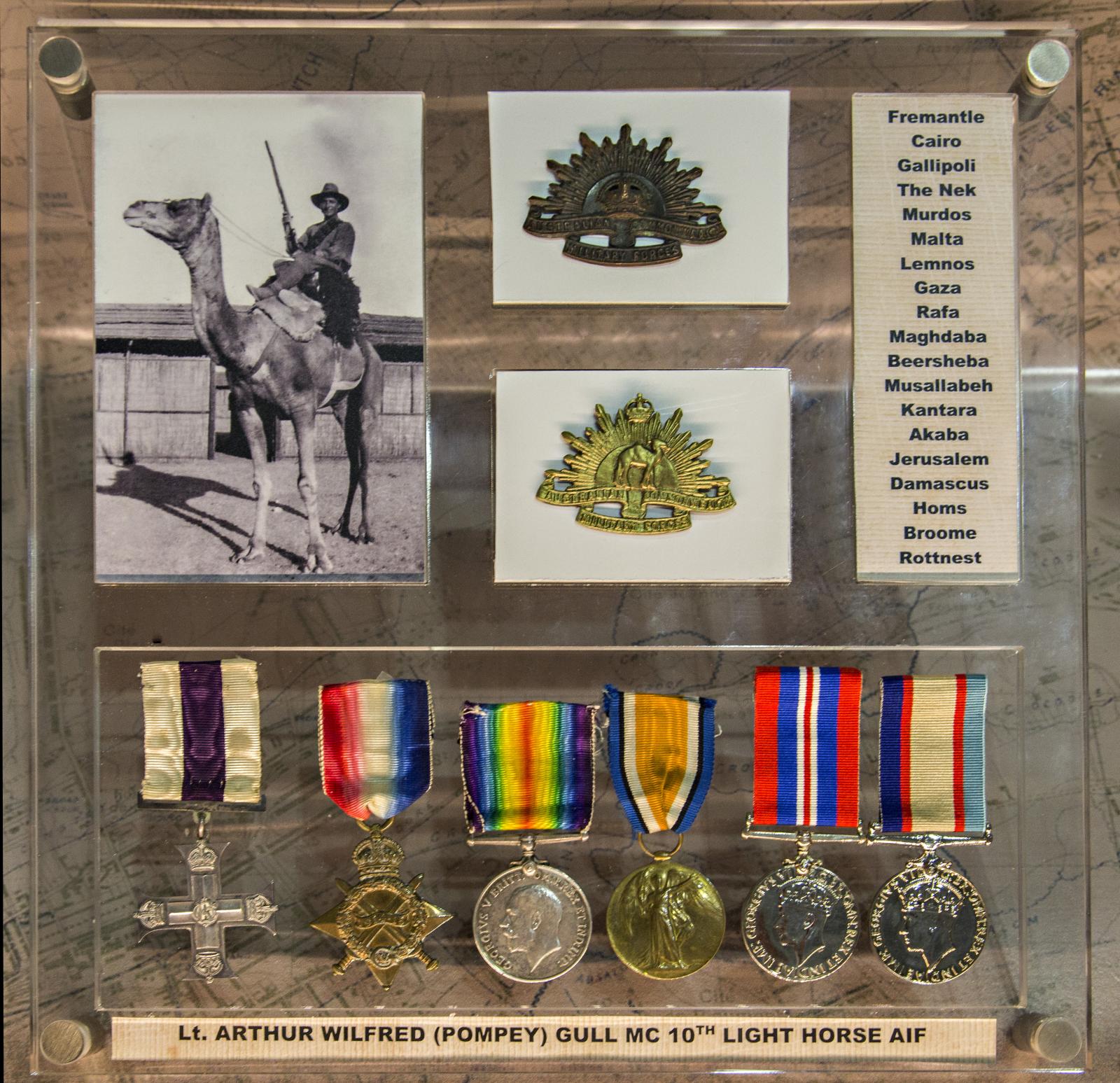
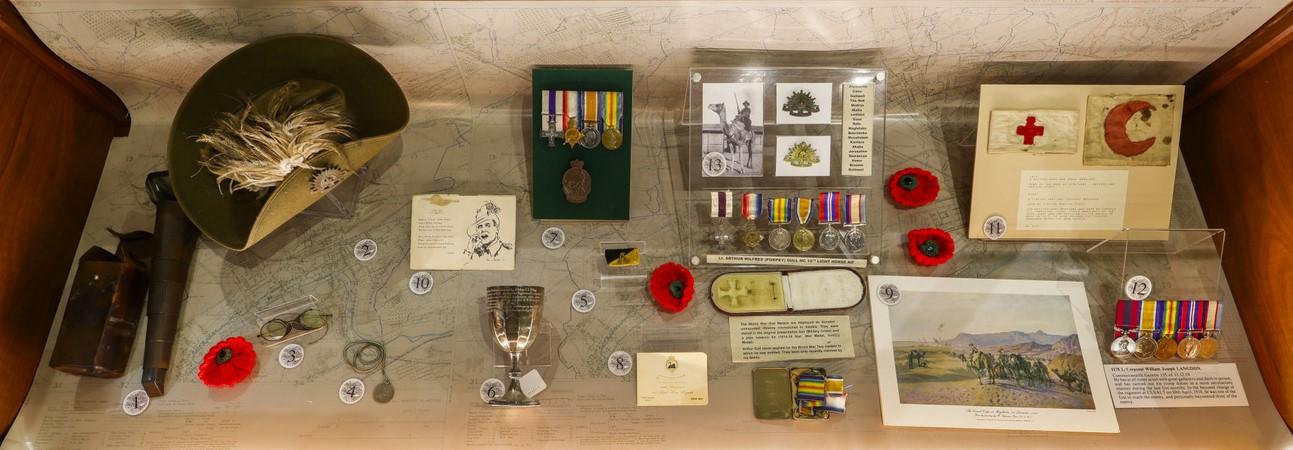
Scan this QR code to open this page on your phone ->

